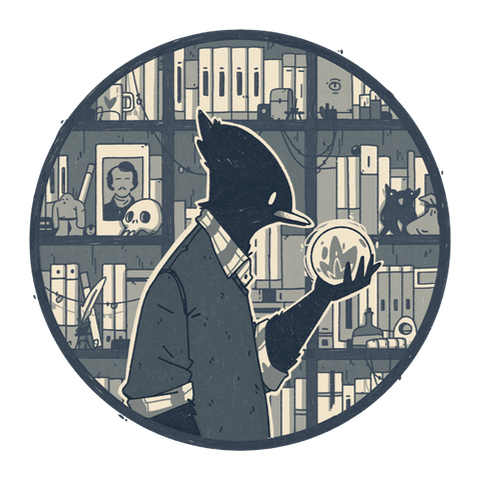ESPAÑOL [fusion_builder_container hundred_percent=»yes» overflow=»visible»][fusion_builder_row][fusion_builder_column type=»1_1″ background_position=»left top» background_color=»» border_size=»» border_color=»» border_style=»solid» spacing=»yes» background_image=»» background_repeat=»no-repeat» padding=»» margin_top=»0px» margin_bottom=»0px» class=»» id=»» animation_type=»» animation_speed=»0.3″ animation_direction=»left» hide_on_mobile=»no» center_content=»no» min_height=»none»][please scroll down for the English version]
Esta es una invitación a participar en un juego de escritura dentro del Festival #TwitterFiction: una reunión de historias y proyectos en Twitter que se lleva a cabo esta semana y hasta el 2 de diciembre. El juego se llama «Muchos Pasados» y es una invitación a crear historias mediante tuits encadenados, del siguiente modo:
1. En Twitter, hay que partir de un tuit que tenga las etiquetas (hashtags) #TwitterFiction y #MPs. Ese tuit contará algo: un pequeño fragmento de una historia. Ya hay varios publicados, y entre ellos algunos que publicaremos tanto yo mismo como varios amigos que ya se han animado a colaborar con este juego. Si no se encuentra ninguno que guste se puede crear uno nuevo.
2. La idea es convertir ese tuit en parte de una cadena: de una historia que se pueda seguir saltando de un tuit a otro. El truco está en que las historias se escribirán al revés: partiendo de un final y avanzando hacia el principio. Para hacer esto, primero hay que copiar el enlace directo (permalink) del tuit que nos interesa.
3. Y luego, hay que escribir y publicar un nuevo tuit en el que haya lo siguiente:
a) Un nuevo segmento de historia: lo que pasó antes de lo que se cuenta en el tuit previo.
b) El enlace permanente a ese tuit previo.
c) Las etiquetas #TwitterFiction y #MPs.
Los pasos 2 y 3 se pueden repetir muchas veces, y de este modo se puede llegar a tener una cadena de tuits, cada uno de los cuales apunta a otro que es posterior en el desarrollo de la historia que cuentan. Los lectores llegarán al final cuando encuentren un tuit sin enlaces posteriores.
[box style=»note»]Este es un ejemplo: «Tresenrama», una historia dividida en tres cadenas sucesivas de tuits. Para leer basta hacer clic en los enlaces de los tres tuits de abajo, en orden («Día 1», «Día 2», «Día 3»), y seguir los tuits que vayan apareciendo.Día 1
—No me llame "mago" —dijo Wang—. No lo soy. Soy algo distinto. Soy el augur de la Tresenrama.#TwitterFiction #MPs https://t.co/D0LQodL4
— Horacio Kustos (@hkustos) November 28, 2012
Día 2
—Puede decir que soy mago —dijo Wang— pero también soy algo más: soy el augur de la Tresenrama.#TwitterFiction #MPs https://t.co/Vz5C9fZg
— Horacio Kustos (@hkustos) November 28, 2012
Día 3
—Tal vez sea justo llamarme mago —dijo Wang—, tal vez no. Soy el augur de la Tresenrama.#TwitterFiction #MPs https://t.co/CJsNbq1A
— Horacio Kustos (@hkustos) November 28, 2012
Lo interesante es que las tres partes de la historia llegan al mismo final en el mismo tuit, que fue (desde luego) el primero en escribirse y no el último. Como en este se puede ir hacia atrás y crear un pasado de cualquier momento de cualquier historia, cualquier momento puede tener muchos pasados: muchos tuits diferentes que lo enlacen y que lo hagan ramificarse en muchas historias diferentes.[/box]
Se puede jugar en cualquier momento pero hay dos horarios especiales a los que los invito: hoy, viernes 30, y el domingo 2 de diciembre, de 19:00 a 21:00 horas, tiempo de la ciudad de México (-7 GMT).
ENGLISH
This is an invitation to play a writing game within the #TwitterFiction Festival: a gathering of stories and projects on Twitter that has been going on this week and will continue until December 2nd. The game is called «Many Pasts» and it can be played to create stories in the form of linked tweets, this way:
1. On Twitter, begin with tweet tagged #TwitterFiction and #MPs. It will tell something: a little snippet of a story. There are several already online, some of them published by me and by several friends who have agreed to help me give some examples of the game. You can write your own «initial» tweet too.
2. The idea is to turn that tweet into part of a chain: a story that can be followed jumping from one tweet to another, following hyperlinks. The trick is that you can do that when you write your story backwards: from the ending and towards a beginning. To do this, first copy the permalink of the tweet you began with.
3. And then publish a new tweet with the following content:
a) A new story snippet: what happened before the previous tweet.
b) The permalink you copied.
c) The hashtags: #TwitterFiction y #MPs.
Steps 2 and 3 can be repeated as many times as you desire, and thus you can get a chain made of tweets, each one pointing to the next event in a story. That story will end when the reader finds a tweet without any further link.
[box style=»note»]This is an example, written in Spanish (I hope to make an English version today): «Tresenrama», a story in three parts, each of which is a tweet chain. To read you only have to click on the links provided in the tweets below, in order (Día 1, Día 2, Día 3: days 1, 2, and 3) and keep following the links that will appear.Día 1
—No me llame "mago" —dijo Wang—. No lo soy. Soy algo distinto. Soy el augur de la Tresenrama.#TwitterFiction #MPs https://t.co/D0LQodL4
— Horacio Kustos (@hkustos) November 28, 2012
Día 2
—Puede decir que soy mago —dijo Wang— pero también soy algo más: soy el augur de la Tresenrama.#TwitterFiction #MPs https://t.co/Vz5C9fZg
— Horacio Kustos (@hkustos) November 28, 2012
Día 3
—Tal vez sea justo llamarme mago —dijo Wang—, tal vez no. Soy el augur de la Tresenrama.#TwitterFiction #MPs https://t.co/CJsNbq1A
— Horacio Kustos (@hkustos) November 28, 2012
The interesting part is that the three chains of the story reach the same ending in the same tweet, which was (of course) the first one to be written, and not the last. Since you can go backwards and create a «past» to any moment in any story, each moment can have many pasts: many different tweets may point to it and make it branch into many different stories. [/box]
You can play anytime but there are two special, «showcase» sessions scheduled: today, November 30th, and Sunday, December 2nd, from 7:00 pm to 9:00 pm, Mexico City Time (-7 GMT).
[/fusion_builder_column][/fusion_builder_row][/fusion_builder_container]



3 comentarios. Dejar nuevo
Información Bitacoras.com…
Valora en Bitacoras.com: ESPAÑOL [please scroll down for the English version] Esta es una invitación a participar en un juego de escritura dentro del Festival #TwitterFiction: una reunión de historias y proyectos en Twitter que se lleva a cabo est……
[…] La idea que yo propuse, y que fue seleccionada como proyecto destacado, se llama “Muchos Pasados/Many Pasts” y es un juego de escritura: tuiteando primero el final de una historia, y luego enlazando a ella tuits que cuenten lo que pasó antes de la misma, se pueden crear cadenas de historias (cada tuit sería un capítulo pequeñísimo) que luego pueden leerse en orden cronológico. Las instrucciones se ven aquí. […]
[…] into stories on her blog. Alberto Chimal (@albertochimal) invited followers to play a game called Muchos Pasados/ Many Pasts, in which participants wrote stories backwards. Beginning with a final line, either their own or a […]